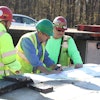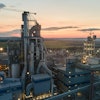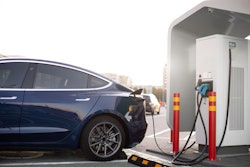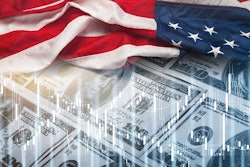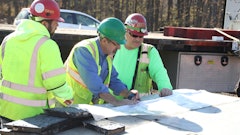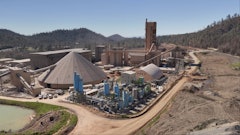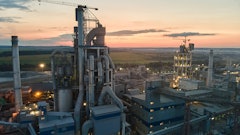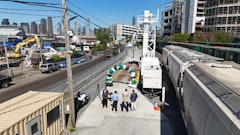
You might be wondering, “What does this have to do with me?”
A large majority of our readers might logically come to that question first and foremost. So, to those of you that did, let me be fully sincere as I put this into some important perspective. The supply chain issues you hear about everyday, the labor shortages you've experienced hiring, and the rising costs of materials are directly connected to these climate concerns.
Maybe you're not so convinced climate change is real, or that it's an issue to worry about. If you give me a chance here, I want to help show you why, even if you don't believe in its existence, there are still ways to benefit from the fight against it. Your personal politics aside, there is now more money on the table than ever before to enact system wide changes, upgrades and advances to our infrastructure and industries. Why not position yourself and business to take advantage of these newly available funds, and be on track to lead the way into the future? Before we get to those opportunities, let's have a brief look at some of the realities happening presently.
Trouble Abroad
There’s a heatwave crisis happening in China with unprecedented temperatures failing to fall below 93F even through the middle of the night. Records were broken when the regions of Chongqing, Xinwen, and the provincial capital of Chengdu, had sustained temps between 110-113F across 2 days, after 11 consecutive above 104F.
Chengdu is home to roughly 20 million people, outdoor construction projects and even the local Toyota factory, a joint Japanese project, had to cease production as the extreme conditions caused “daily life to be pushed to its limits,” according to the city’s urban management authorities. In the evening, the city’s operational and advertising lights, usually brightly lit, are dimmed to reduce ambient heat as well as limit excess energy consumption.
Worse yet, as the demand for air conditioning and other forms of relief skyrockets in other areas across the nation, the drought effects continue to ripple. China’s largest fresh body of water, Payong lake, is 75% lower than normal for this time of year. The main trunk of the Yangzte river, a vital resource of life, energy and commerce, has dried up to 51% lower than the average of the past 5 years, according to the state media outlet.
Processing all this at once is difficult, but the important reality is that the kind of "regular" life and activity required for the global industrial economy to function, is not possible under sustained conditions like these.
A Shadow of Things To Come
Last week, a major new report was released by a nonprofit research group called First Street Foundation. The data in their report found that a massive area in the heartland of America, stretching from the eastern regions of Texas all the way to the middle of Louisiana, and climbing north all the way to the Great Lakes, is changing rapidly.
The First Street Foundation model projects that by 2053, this region would experience a heat index of 125F for as many as 18 days in a year. Why so high? The figure is based on what is already the hottest temperature 7 days this year within the zone.
The scientists dubbed this new zone the “extreme heat belt”, which spreads across more than 25% of the entire land area of the United States. More than 100 million American citizens live within this zone which encompasses over 1000 counties, and right through some of the most important agricultural areas that we depend upon.
Maybe you’re skeptical about these kinds of numbers, which is good. Being skeptical is a positive thing. However, in this case, similar global models for temperatures and sea-level rise, from the year 2000 and even those from 50 years ago, turned out to be fairly accurate. It's time to take these signs with the seriousness they deserve, and not from a paper-straw-instead-of-plastic way. It's going to require innovative industrial rethinking. How we plan, how we build, and how we invest our resources, right now.
The Infrastructure Bill's Big Bet
The ink has been dry on President Biden's landmark piece of legislation, the Inflation Reduction Act (IRA), for a week now, and the impact of its potential is starting to become clearer. In regards to climate change, the bill puts forth the single largest federal investment towards the crisis, to the tune of $369 billion. This more than quadruples the $90 billion dollar investment earmarked by the 2009 American Recovery and Reinvestment Act (ARRA), which was the previous largest single dollar effort.
A lot the IRA climate funds will go to things like alternative energy development and implementation, but there's also money for electric vehicles, new and more sustainable infrastructure, as well as a for a multitude of various clean technologies in construction and manufacturing. Last week, we covered 7 of the funding opportunities that specifically deal with opportunities within the asphalt industry, but that's just the surface. There are ways on the state and local levels to get involved.
In the coming weeks, we will be covering stories from Colorado, Alabama and Michigan, where unconventional approaches to urban planning are expected to transform parts of their states. NAPA is already working towards a zero emission future for the asphalt world, but we are going to need pavers and producers on every level of the industry to rethink how we design, construct and pave our communities.
This new influx of spending is meant to jumpstart a new kind of arms race. An ecological "space race", but instead of facing off against Russian cosmoneaughts and flying to the moon, we are, largely, squared off against China, and sprinting towards a future where we stave off environmental collapse. We should think of it in these terms, and see ourselves, once again, as the pioneers and heroes who blazed trails into outer space. Why? Because boldly going in this direction will take guts. It will take courage. It will be a risk. But the rewards are high.

